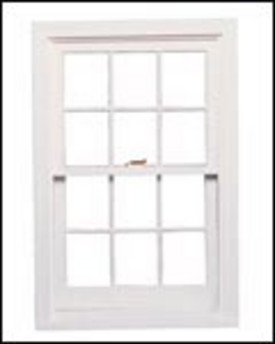Just because windows look the same doesn’t mean they’ll give you the same performance. Some windows are much more energy efficient than others, which will decrease heating and cooling costs while increasing the comfort of your home. If you live in a cold city like Boston, switching from low-efficiency to high-efficiency windows will cut your heating costs by as much as 40 percent. If you live in a hot climate like Phoenix, better windows can knock up to 30 percent off your cooling bills.
 |
|
| The U-factor rating, and Solar Heat Gain Coefficient, Visible Transmission and Air Leakage numbers will help you decide if the window you want is suitable for your climate.
Credit: National Fenestration Rating Council |
|
Read the Label
The best way to determine the energy efficiency of a given window is to compare rating labels. Nowadays, most windows are rated by organizations like the National Fenestration Rating Council (NFRC) or the Department of Energy (DOE). Better quality windows will have NFRC labels. This label indicates that the manufacturer submitted similar units for laboratory testing. The tests measure the window’s U-factor or conductivity, solar heat gain coefficient (SHGC), and visible light transmittance (VLT). In addition, some windows receive the DOE’s Energy Star Label This label uses color-coding to indicate which windows meet minimum performance standards for energy efficiency in each region of the country. The minimum standards for the North are a U-factor of .35 or lower with no requirement for SHGC. Minimum standards for the central region are a U-factor of .40 or lower and a SHGC of .55 or lower. In the South, a U-factor of .75 or lower and a SHGC of .40 or lower will earn you a star.
U-Factor
In the winter we expect windows to keep heat in the house, but in the summer we expect them to keep it out. You can gauge a window’s ability to do this by looking at the U-factor. The U-factor is a measurement of how quickly heat will pass or conduct through a given window. The lower the U-factor, the harder it is for heat to pass through the window. For example, a single-glazed aluminum window readily conducts heat because it has a relatively high U-factor of about 1.30. A double-glazed wood window does a better job keeping heat where you want it because it’s rated at around .30.
Solar Heat Gain
Heat passes in and out through your windows every day of the year. It also conducts as radiant energy, which can be a big problem in the summer when you want it to be cool inside. The solar heat gain coefficient (SHGC) is a measure of how much solar heat can pass through a window. If a unit has a rating of .50, it means that the window admits 50 percent of the heat that strikes it. This measurement covers the whole window, so the amount of heat that gets through depends on the type of glass and the width of the frame parts. A typical value for a double-glazed window would be between .30 and .60. The .30 window would admit half as much solar heat as the .60 window.
Visible Light Transmittance
 |
||||
|
||||
Strange as it sounds, only a certain portion of visible light can pass through a pane of glass. The more that gets through, the brighter the inside of your house. The percentage of available light that passes through the window is measured as visible light transmittance (VLT). For example, a window with a VLT number of .50 only admits 50 percent of the available light. Again, ratings are for the entire window, so remember that wide frames block more light than narrow ones. The glass coatings used to prevent solar heat gain or radiant heat loss also reduce the amount of light that can get through the glass. The VLT will help you figure how much light you’re giving up when you opt for higher energy efficiency.
Low-e Coatings
A low-e coating is an incredibly thin layer of metal applied to the surface of the glass. The coating is so thin that you can see through it, yet it has the ability to reflect heat rather than conduct it. In a cold climate these coatings help keep the house warm by preventing the escape of radiant heat. In a hot climate their role is to keep heat from entering by reflecting it back out through the windows. A wide variety of low-e coatings are available. Spectrally selective coatings are especially good for cooling climates where they reduce solar heat gain without blocking an excessive amount of light.
Credit: Renovate Your World




























